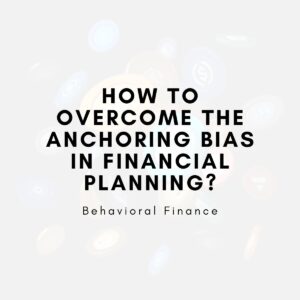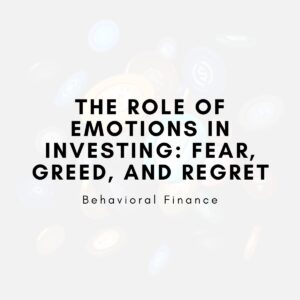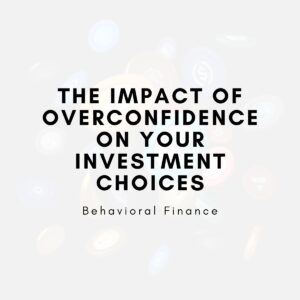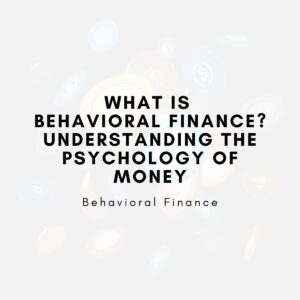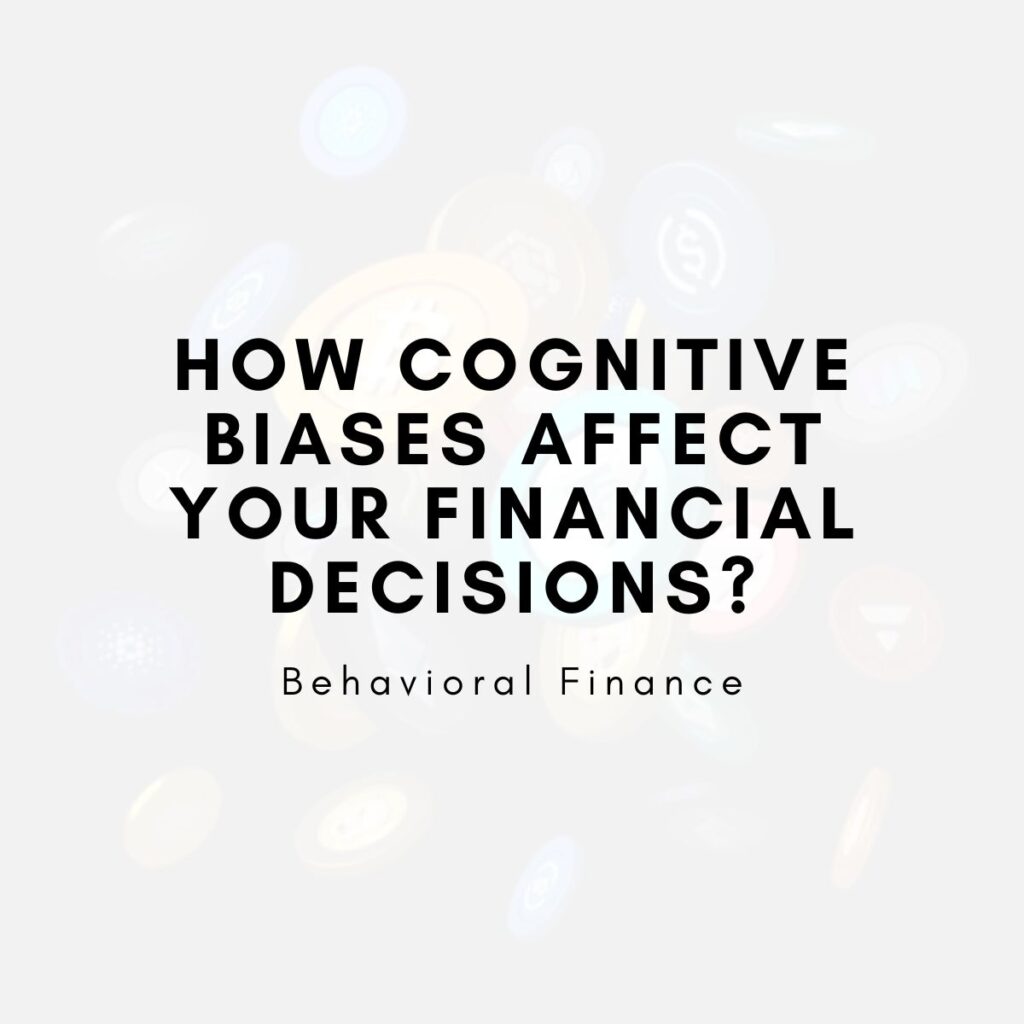
What are cognitive biases, and how do they impact financial decisions?
Cognitive biases are mental shortcuts or errors in thinking that influence decision-making. In finance, these biases often lead to irrational behaviors such as overconfidence, loss aversion, or herd mentality. By understanding cognitive biases, you can identify their impact, avoid costly mistakes, and make more informed financial choices.
Summary Table: How Cognitive Biases Affect Your Financial Decisions
| Cognitive Bias | Description | Example |
|---|---|---|
| Overconfidence Bias | Overestimating personal knowledge or ability, often leading to risky financial decisions. | Believing you can outperform professional investors, resulting in speculative trading. |
| Anchoring Bias | Relying too heavily on the first piece of information (anchor) when making decisions. | Refusing to sell a stock bought at $100, even if it’s worth $75 due to unfavorable market conditions. |
| Loss Aversion | Prioritizing avoiding losses over acquiring gains, leading to overly conservative choices. | Keeping money in a low-interest savings account instead of investing due to fear of losing capital. |
| Herd Behavior | Following the crowd’s actions, especially during market highs or lows. | Buying a trending stock without researching its fundamentals, just because others are investing in it. |
| Mental Accounting | Categorizing money based on its source or intended use, leading to inconsistent financial decisions. | Spending a tax refund on luxuries while ignoring credit card debt. |
| Confirmation Bias | Seeking information that confirms existing beliefs while ignoring contradictory evidence. | Ignoring negative news about a company you’re invested in, focusing only on positive reports. |
| Status Quo Bias | Preferring things to remain the same, avoiding change even when it’s beneficial. | Keeping a poorly performing investment instead of exploring better options. |
| Availability Heuristic | Judging the likelihood of an event based on how easily examples come to mind, leading to skewed perceptions. | Avoiding stock investments after hearing about a recent market crash, even if conditions are favorable. |
| Recency Bias | Giving more weight to recent events rather than long-term trends. | Selling investments after a temporary market dip, assuming it signals a long-term decline. |
| Sunk Cost Fallacy | Continuing an unprofitable endeavor due to prior investments of time or money. | Holding onto a losing stock to “recover” past losses, even when better opportunities exist. |
| Optimism Bias | Believing that negative events are less likely to happen to you. | Failing to save for emergencies, assuming you’ll never face unexpected expenses. |
| Endowment Effect | Overvaluing possessions simply because you own them. | Holding onto a house during a buyer’s market, refusing reasonable offers because it feels undervalued. |
| Bandwagon Effect | Adopting a behavior or trend simply because others are doing it. | Investing in cryptocurrency without research because it’s popular among peers. |
| Framing Effect | Decisions influenced by the way information is presented rather than its content. | Opting for a loan with “low monthly payments” without considering the high-interest rate. |
| Hindsight Bias | Believing you “knew it all along” after an event has occurred, impacting future decisions. | Thinking you predicted a stock crash after it happened, leading to overconfidence in future predictions. |
This table summarizes the key cognitive biases, offering clear descriptions and relatable examples. By recognizing these patterns, you can better understand how they influence financial decisions and take steps to avoid common pitfalls.
Introduction
When it comes to money, we like to believe our decisions are rational and well-thought-out. Yet, time and again, emotions, preconceived notions, and mental shortcuts drive our financial behavior. These are not random; they stem from cognitive biases—systematic errors in thinking that can distort judgment.
Cognitive biases affect everything from how we save to how we invest, often leading us away from sound financial strategies. By understanding these biases, you can gain better control over your financial habits and improve decision-making. This guide explores the most common cognitive biases, their impact on financial decisions, and strategies to counteract them.
Understanding Cognitive Biases
Cognitive biases are psychological tendencies that cause deviations from rational thinking. While they help simplify decision-making, they often lead to flawed judgments, especially in complex fields like finance.
The Role of Cognitive Biases in Finance
Unlike traditional finance theories, which assume rational decision-making, behavioral finance acknowledges that biases drive many financial choices. This explains why people buy high during market bubbles, avoid selling losing investments, or overspend on luxuries despite budget constraints.
Common Cognitive Biases in Financial Decisions
Overconfidence Bias
Overconfidence bias occurs when individuals overestimate their knowledge or abilities in financial decision-making. This bias often leads to taking unnecessary risks, underestimating potential losses, or believing in one’s ability to time the market.
Example: A novice investor might believe they can outperform seasoned professionals, leading to speculative trades.
Anchoring Bias
Anchoring bias is the tendency to rely heavily on the first piece of information encountered (the “anchor”) when making decisions.
Example: An investor might refuse to sell a stock bought at $100 because its current price ($75) feels too low, even if market conditions suggest further decline.
Loss Aversion
Loss aversion describes the tendency to fear losses more than valuing equivalent gains. People often hold onto losing investments or avoid necessary financial risks.
Example: Preferring to keep money in a low-interest savings account rather than investing it due to fear of potential losses.
Herd Behavior
Herd behavior involves following the actions of others, especially during periods of market volatility. People often buy during market booms or sell during crashes, amplifying trends.
Example: Purchasing a stock just because it’s trending, without conducting independent research.
Mental Accounting
Mental accounting is the habit of categorizing money based on its source or intended use, leading to inconsistent financial behavior.
Example: Treating a bonus differently from a paycheck and spending it on luxuries rather than saving it.
Confirmation Bias
Confirmation bias is the tendency to seek information that supports existing beliefs while ignoring contradictory evidence.
Example: An investor only reads optimistic articles about a struggling company they’re invested in, ignoring red flags.
How Cognitive Biases Affect Everyday Financial Decisions?
Saving and Budgeting
Biases like mental accounting and loss aversion can hinder effective saving. For instance, people may avoid reallocating funds from a vacation budget to an emergency fund, even when needed.
Investing
Cognitive biases significantly impact investment decisions, often leading to poor market timing, excessive trading, or emotional reactions to short-term market movements.
Example: Overconfidence might lead an investor to trade frequently, increasing costs and reducing returns.
Spending Habits
Emotional triggers and biases like anchoring or herd behavior can drive impulsive spending. Retailers often exploit these biases through sales and discounts.
Example: Buying an item on sale because its original price was higher, even if it’s not needed.
Strategies to Overcome Cognitive Biases
1. Increase Awareness
The first step to overcoming biases is recognizing their existence. Reflect on past financial decisions to identify patterns influenced by cognitive biases.
2. Use Data-Driven Decision-Making
Rely on facts, research, and objective analysis rather than emotions or gut feelings. Tools like financial calculators or investment apps can help remove bias.
3. Set Clear Goals
Having specific financial goals can reduce impulsive decisions. Write down your goals and align your actions with them.
Example: If your goal is to save for retirement, avoid withdrawing funds for non-essential expenses.
4. Seek a Second Opinion
A trusted advisor or financially savvy friend can provide objective feedback and counter emotional or biased decisions.
5. Automate Financial Processes
Automating savings or investments reduces the influence of biases by removing decision-making from the equation.
Example: Set up automatic contributions to a retirement fund to ensure consistent saving.
The Role of Behavioral Finance in Addressing Cognitive Biases
Behavioral finance offers tools and techniques to identify and mitigate the impact of biases. It bridges the gap between economic theories and real-world behaviors, providing actionable insights.
Nudges and Behavioral Interventions
Nudges, such as default savings options or reminders to track expenses, help counteract cognitive biases.
Example: Apps like Mint or YNAB (You Need A Budget) send alerts about overspending, encouraging mindful financial habits.
Financial Education
Improving financial literacy equips individuals to recognize biases and adopt more rational strategies. Courses, books, and workshops are excellent resources.
Conclusion
Cognitive biases are powerful influencers of financial decisions, often leading to irrational behaviors and suboptimal outcomes. From overconfidence to herd behavior, these biases affect how we save, invest, and spend money. However, by recognizing these tendencies and adopting strategies like data-driven decision-making, goal-setting, and professional guidance, individuals can minimize their impact and make smarter financial choices. Understanding and managing cognitive biases is key to achieving long-term financial success.
Key Takeaways
- Cognitive biases are mental shortcuts that often lead to irrational financial decisions.
- Common biases include overconfidence, loss aversion, and confirmation bias.
- These biases impact saving, investing, and spending behaviors.
- Strategies to overcome biases include awareness, data-driven planning, and automation.
- Behavioral finance provides tools to mitigate biases and promote rational decision-making.

